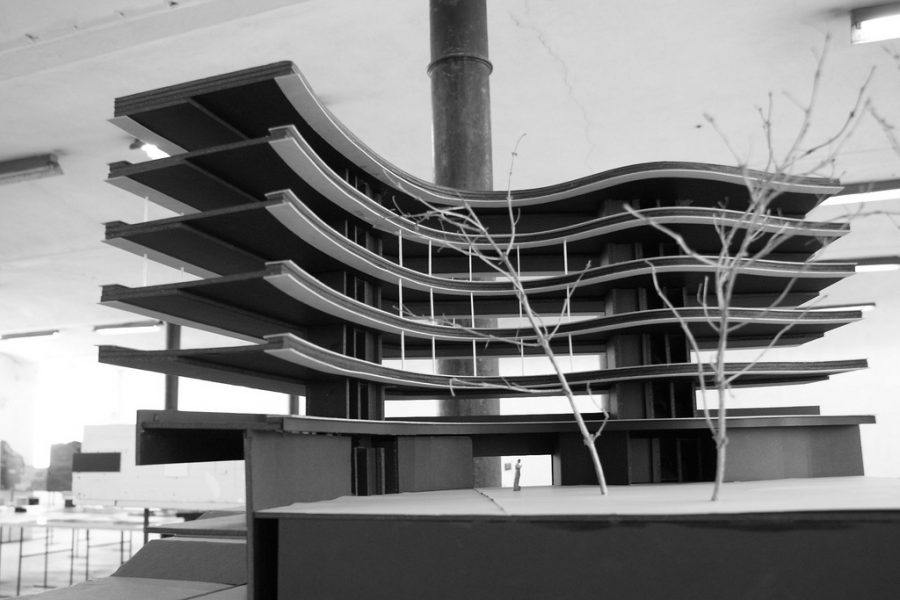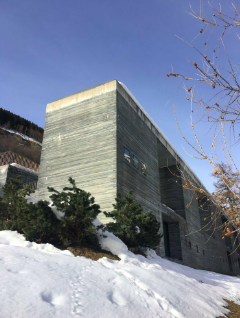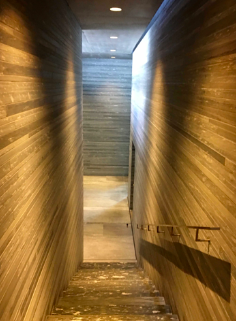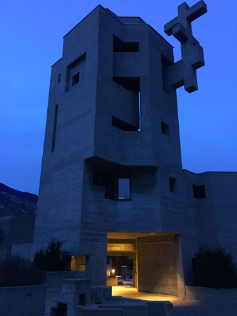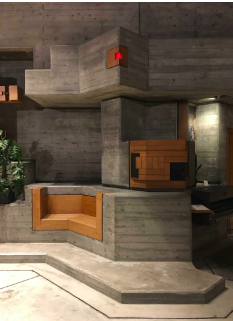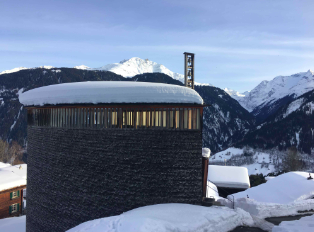Not long after his celebrated thermal baths were completed, Peter Zumthor, the idiosyncratic reclusive Swiss architect, gave a rare lecture in the elegant basement lecture hall at the RIBA. I had only recently qualified and I was eager to see what I hoped would be some amazing slides and details of this arch minimalist’s work. The lecture hall was packed to the brim with barely standing room in the aisles. We all waited in eager anticipation.
Peter Zumthor walked onto the stage to rapturous applause. Behind the lectern a large yellow monochrome rectangle was projected onto a giant screen. ‘Tonight’ the great man announced ‘I will…. read to you my ‘Beat’ poetry. Accompanying each poem will be a colour slide that particularly connects to the poem that I will read’. As it became apparent that this was not some sort of elaborate joke, there was an overwhelming sense of bemusement which gradually turned to disappointment as Zumthor launched into one verse of obscure poetry after another. Zumthor was no Jack Kerouac and gradually the audience drifted away.
Zumthor is a tough architect to like. His reputation as a reclusive
Thermal Baths at Vals by Peter Zumthor. Exterior view on left and interior view on right (Photographs by author).
It is a dream of many architects to build a building in one material only; and with his thermal baths at Vals, Zumthor has almost achieved it. Vals is a small village, with naturally occurring hot springs, in Graubunden (one of the twenty six cantons in Switzerland) about two hours’ drive South East of Zurich. The baths are monolithic and made from layers of the local gneiss stone, quarried a kilometer up the valley. The building seems to rise naturally out of the ground in the forest. Both the material and the design play with the hot water, the reflections and the steam filled air. But there is nothing compromising about this building. Even the spaces inside are built of this hard grey stone in a sort of geometric cave system. The program for the baths is uncompromising too. Each successive room dwells on one particular sense. One room is for touch, one for smell, another for sound etc. If one talks, which is strictly forbidden, an assistant appears out of nowhere to remind one that one is not allowed to speak. Relaxation takes hard work and concentration please – these are the rules.
This building, however, like most of Zumthor’s work is extremely poetic, even moving. But how does he achieve this effect? Zumthor has said in interviews that his design process starts with a feeling or a sense that comes from his intuition. Once he has grasped that intuitive sense he fiercely holds on to it and is uncompromising in achieving his vision. He says ‘I take care that nobody destroys my first image’. As anyone who has commissioned a building knows, there are many things that can derail the initial building concept. Rising costs, interfering clients, difficult permissions, often mundane practicalities like servicing and structure, onerous health and safety requirements, litigious contractors – all of these things can push a building far away from the initial vision. Zumthor seems to have a gift for having that vision, communicating that vision and then expressing it in built form. This uncompromising attitude has, no doubt, ended in some failures, but has resulted in his built works being, in my opinion, highly successful, even beautiful.
Beautiful is a word that is deeply unfashionable in the visual arts today. Often architects and artists feel ashamed to use it. It sounds unsophisticated, even naïve, and what does it mean anyway? It also precludes the ability to be ironic, a trait that is now highly valued throughout the world of visual arts. In this instance, Zumthor is unusual in that he is honest enough to believe in beauty and to even strive for it. He believes that buildings should be beautiful and I would agree with him that all the buildings of his that I have seen are indeed deeply moving. They have a directness and a refinement that is supremely elegant and, yes, even, beautiful.
So how does Zumthor achieve this? Part of the answer lies in his emphasis on materials. He says, ‘it is about how they are; it is about what presence they develop’. And he says that ‘architecture is not so much about form, it is about materials’. A second part of the answer lies in construction. Zumthor believes that the method of construction should come out of the material used. Indeed he is extremely poetic about materials and has a natural sympathy for how they should be put together. He abhors the normal state of affairs in a building where the structure is invisible and the finishes are hung off the structure. For him, the method of construction should be informed by the materials used. This gives his buildings clarity and a directness that is easy to understand and a seeming simplicity that is very human because it is so instantly legible.
Thirdly, Zumthor talks about ‘atmosphere’. This is a harder concept to grasp. In lectures and interviews, he has tried to explain what he means by ‘atmosphere’. He says that ‘architecture is experienced by laymen without thinking’. He says ‘we must let go of cerebral things or academic things and trust intuition’. It seems that his design starts with the idea of expressing a feeling or a sense or an ‘atmosphere’ and he holds onto this idea, passing through his great respect for material which then informs the method of construction until at the end the building has a form and a ‘soul’. He says that ‘there is no difference between the two sentences – the building is beautiful and the building has soul.’
Where did Zumthor get this rather uncompromising architectural method and poetic view of the world? Part of the answer to that question can be found in the town of Chur, the regional capital of Graubunden, the canton where Zumthor grew up. Zumthor is a great admirer of an obscure brutalist church built in this small city. Brutalism is a style of architecture that is deeply disliked by most at present, especially in Britain. Attempts have been made, by Elaine Harwood for example, in her rather dry book ‘Space, Hope and Brutalism’, to rehabilitate this expressive period in architecture but without much success. It seems that the raw sculptural qualities of brutalism just are not yet appreciated, in this country at least. But, for Zumthor, the uncompromising rawness of the ‘Heiligkreuzkirche’ by Walter Forderer is an inspiration.
Heiligkreuzkirche by Walter Forderer. Exterior view on left and interior view on
This church, on the outskirts of Chur, is built almost solely from reinforced concrete, both inside and outside. The windows are so recessed that they seem not to exist at all. The sculptural quality of poured concrete is explored in an orgy of geometric forms. What results is almost pure sculpture rather than building. There are occasional moments when wood is used, for the seating in the interior, for example, but this is rare. It is a sort of monolithic, expressive riot of orthogonal and octagonal form and it seems to have inspired Zumthor greatly.
Zumthor gained great acclaim for his building at Vals, and drew the attention of the wider world. But by then he had already built a number of gems. The St Benedict chapel, which was designed in 1988, is one of them and perfectly encapsulates the spiritual qualities of his work. This tiny chapel, again seemingly built of one material (wood) is situated on the high slopes above the charming and ancient village of Sumvitg. This clear and direct structure is designed in plan in the shape of a tear drop. The clerestory lighting is both inspiring and contemplative in the way all church lighting should be but rarely is. The purity of the timber construction is expressed superbly and elegantly in the herring bone structure of the roof. This is a place which really inspires a moment of quiet thoughtful prayer, a welcome moment of peace in a fraught, busy world. Despite the buildings small size it’s impact, especially internally, is immense. It is very small, yet a masterpiece.
Since the thermal baths at Vals, Zumthor has built successfully in
St Benedict chapel at Sumvitg by Peter Zumthor. Exterior view on left and interior view on right (Photographs by author).
Zumthor has proposed a sort of black Jean Arp shaped form that is inspired by the La Brea tar pits that exist on part of the site. Other architects have failed here, most notably Rem Koolhaas whose 2001 competition winning proposal was never built. Zumthor’s design is controversial. It requires a huge amount of money to be raised and it also proposes demolishing three existing buildings on the site. These buildings were built by families who donated large sums of money and important artworks to the collection and so some of their descendants are, understandably, unhappy about the proposal. The choice of Zumthor was a daring and totally unexpected choice and I suspect that Micheal Govan, director of LACMA, (who is a huge fan of Zumthor) was very influential in that choice.
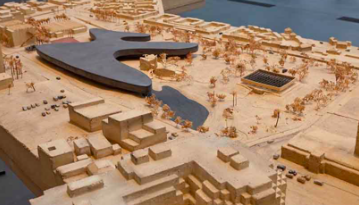
Image of model of original winning design for LACMA by Peter Zumthor
The original design, which resembles a splash of black tar, was exciting but immediately faced resistance. First of all it was alleged that Zumthor had never visited the site before he designed the building. Apparently, these rumours have never been fully denied. Secondly Zumthor was asked to change the design, because the proposed building encroached on the fossil rich and popular La Brea tar pits, part of the Natural History Museum of Los Angeles County. The new proposal now spans Wilshire Boulevard but instead of glossy black it may now be clad in travertine stone, seemingly at odds with its original organic shape.
This is undoubtedly Zumthor’s greatest challenge so far. Not only the scale of the building is greater than anything he has done before but also the potential obstacles are greater. Assuming that all the money is finally raised (and rumours are that the target has been achieved), it will be interesting to see if Zumthor holds onto his original vision. As projects get bigger and become more public they have
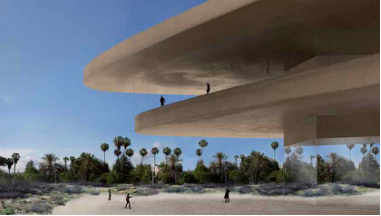
Image of model of revised design for LACMA by Peter Zumthor





